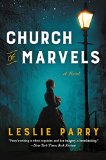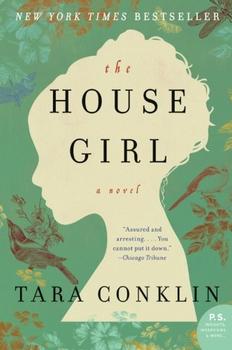Summary | Excerpt | Reading Guide | Reviews | Beyond the book | Read-Alikes | Genres & Themes | Author Bio

From the New York Times bestselling author of My Name Is Mary Sutter comes a rich and compelling historical novel about the disappearance of two young girls after a cataclysmic blizzard, and what happens when their fate is discovered.
New York, 1879: After an epic snow storm ravages the city of Albany, Dr. Mary Sutter, a former Civil War surgeon, begins a search for two little girls, the daughters of close friends killed by the storm who have vanished without a trace.
Mary's mother and niece Elizabeth, who has been studying violin in Paris, return to Albany upon learning of the girls' disappearance - but Elizabeth has another reason for wanting to come home, one she is not willing to reveal. Despite resistance from the community, who believe the girls to be dead, the family persists in their efforts to find the two sisters. When what happened to them is revealed, the uproar that ensues tears apart families, reputations, and even the social fabric of the city, exposing dark secrets about some of the most powerful of its citizens, and putting fragile loves and lives at great risk.
Winter Sisters is a propulsive new novel by the New York Times bestselling author of My Name Is Mary Sutter.
Oliveira's style of writing fits the era quite nicely, with a certain level of propriety that stops well short of being stodgy. Without being overly lyrical or poetic, she draws a picture of Albany with many well-placed hints and carefully drawn descriptions of various locations that complement the story and characters. Mind you, some of the characters here are far from respectable, and the voices that Oliveira gives them reflect their social status perfectly. In fact, there was one character that I particularly fell in love with, despite the cliché of her being a "whore with a heart of gold." If Oliveira is thinking of writing a third book in this series, I would respectfully suggest that her next major protagonist be this character!..continued
Full Review
 (491 words)
(491 words)
(Reviewed by Davida Chazan).
 In the afterword of Winter Sisters, Robin Oliveira notes that she based the blizzard in the novel on one of the real-life deadliest blizzards in North American history, which took place in 1888. According to the Life Science website, "More than 400 people in the Northeast died during the Great Blizzard, the worst death toll in United States history for a winter storm. On March 11 and March 12 in 1888, this devastating nor'easter dumped 40 to 50 inches (100 to 127 cm) of snow in Connecticut, Massachusetts, New Jersey and New York. Huge snowdrifts buried houses and trains, and 200 ships sank in waves whipped up by fierce winds."
In the afterword of Winter Sisters, Robin Oliveira notes that she based the blizzard in the novel on one of the real-life deadliest blizzards in North American history, which took place in 1888. According to the Life Science website, "More than 400 people in the Northeast died during the Great Blizzard, the worst death toll in United States history for a winter storm. On March 11 and March 12 in 1888, this devastating nor'easter dumped 40 to 50 inches (100 to 127 cm) of snow in Connecticut, Massachusetts, New Jersey and New York. Huge snowdrifts buried houses and trains, and 200 ships sank in waves whipped up by fierce winds."
However, while the location of that storm fit Oliveira's story, other aspects don't. That's when I ...

If you liked Winter Sisters, try these:

by Leslie Parry
Published 2016
A ravishing first novel, set in vibrant, tumultuous turn-of-the-century New York City, where the lives of four outsiders become entwined, bringing irrevocable change to them all.

by Tara Conklin
Published 2013
A stunning debut novel of love, family, and justice that intertwines the stories of an escaped house slave in 1852 Virginia and ambitious young lawyer in contemporary New York